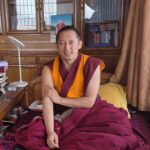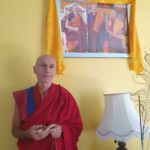Geshe Dennyi Shedrup is the director of the Triten Norbutse´s Medical Institute (School of Four Medical Science of Early Tradition) in Kathmandu and an experienced practitioner of traditional Tibetan medicine. In the summer of 2022, he visited Shenten Dargye Ling for the first time and taught Westerners about Lung (wind) energy. Soon after, Geshe la and his students went to the Himalayas, to collect medical plants and practice man-jin…
Were there doctors of Tibetan medicine in your family, Geshe la?
My uncle is an amchi. I am not sure if he is fully qualified in all the four sciences of Tibetan medicine, but he does help people with their health issues. Being a nomad, he stays in the countryside for long periods and knows medicinal plants and their healing effects. When I was a child, together we collected various herbs and plants and I learned from him how to distinguish them. We spent lots of time together and were very close. My uncle also gave me some basic education, he taught me how to read…
Later, you continued your studies in a monastery?
I entered a monastery when I was sixteen years old. At the beginning, I focused on the preliminary practices, ngondro, I learned some traditional rituals and also learned and practiced tummo. In 1992, I was a part of a group of monks who went to India to pursue studies at the Dialectic school of Menri monastery – shedra. Tibetan medicine is a part of the curriculum of shedra. Besides that, I received teaching of medical science from His Holiness the 33rd Menri Trizin. He taught just me and another monk, my friend. Looking back to it now, I think that maybe he already saw that sowa rigpa, the science of healing, was in my future, that I was going to become a medical doctor. I cherish that memory of him teaching us, it was very special.
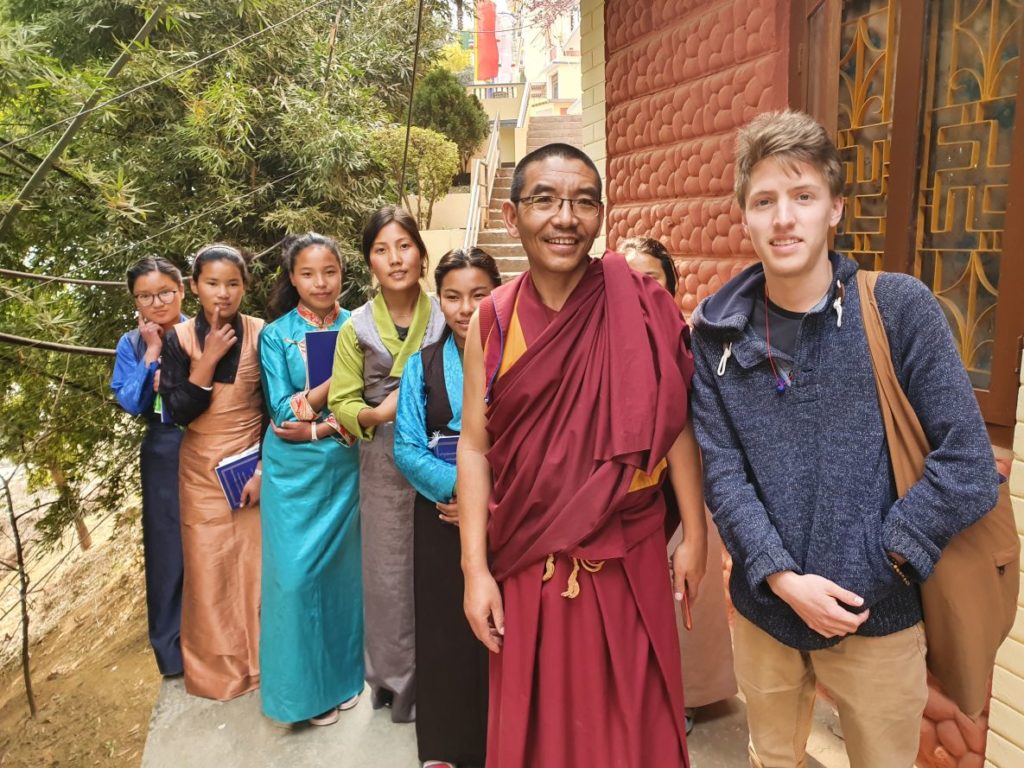
Which path took you finally to lead the medical school of Triten Norbutse monastery?
During my studies I went to Triten Norbutse in Nepal to receive some Dzogchen teachings from Yongdzin Rinpoche. I completed my studies and received my geshe degree there, as well as furtherly deepened my knowledge of Tibetan medical science with Geshe Kunsang Gyaltsen.
As a geshe, I started teaching grammar and poetry at the medical school of the monastery. In 2012, the head of the medical school, Amchi Tsultrim Sangye passed away and Khenpo Tenpa Yungdrung Rinpoche appointed me to take his place.
How are the studies at the school structured?
Some students come from families which hold a lineage of amchis, doctors of traditional medicine, in Dolpo, Mustang and Humla, the mountainous regions of Nepal. Some of them did not have an opportunity to complete a higher education and they also come in different age, some at twelve, others at seventeen. We teach them therefore not only medical science including the history, but also Tibetan language, Tibetan astrology and subjects of general education like biology or chemistry.
After a five-year medical course and passing exams the students obtain the degree of Kachupa, which can be compared to a bachelor´s level of education. It take up to ten years though to become a Menrampa, a fully qualified doctor of Tibetan traditional medicine.
From the study Medicinal Plants of Dolpo: Amchi’s Knowledge and Conservation
“Amchis usually begin their studies when they are in their early teens. They learn to identify the medicinal plants of the highlands in the summer and of the lowlands in the winter. They begin to treat patients after four to five years of study and practice.”
“In the modern world, people choose the medical profession for a variety of reasons, ranging from the motivation to serve others to that of gaining fame and prestige. The most important motivating factor for an amchi should be the desire to benefit other beings and to relieve them from the suffering of disease. Theamchis-in-training are constantly reminded of the six qualities (gyu duk) of intelligence, kindness, trustworthiness, practical experience, diligence and social awareness that they are expected to possess.”
How many students are currently studying at the school?
Around thirty students, at different levels.
I noticed there are many girls among them. Why is it so, do you know?
Yes, more than half are female students. Well, nowadays, in many schools, even at the universities, girls outnumber boys. And we have the same situation in our school. There is a general tendency and interest of girls to study. Young people may look for an education and choose traditional medicine because they see it can bring benefit to people and to society. Also, some parents think about what profession could be good for their children and come to see the school, and when they like it, they send a son or a daughter to be enrolled.
What do the graduates of the school do, after completing their studies?
As much as we can, we support them to go to the mountains and help people there. There is a lack of medical care in the Himalayas and their work is very beneficial for the local communities. Some go there for a period of time, while others return to their native villages and remain permanently.
Even before becoming amchis, students and teachers of the school go every year for three months – from August to October – into the high mountains of Dolpo or Mustang. We spend weeks in high altitudes, sometimes even at 5000 meters above the sea level. It is a part of the regular school´s program.
Teachers and students together collect medical plants and offer medical help for free to the villagers. It is called man-jin, the generosity of medicine.
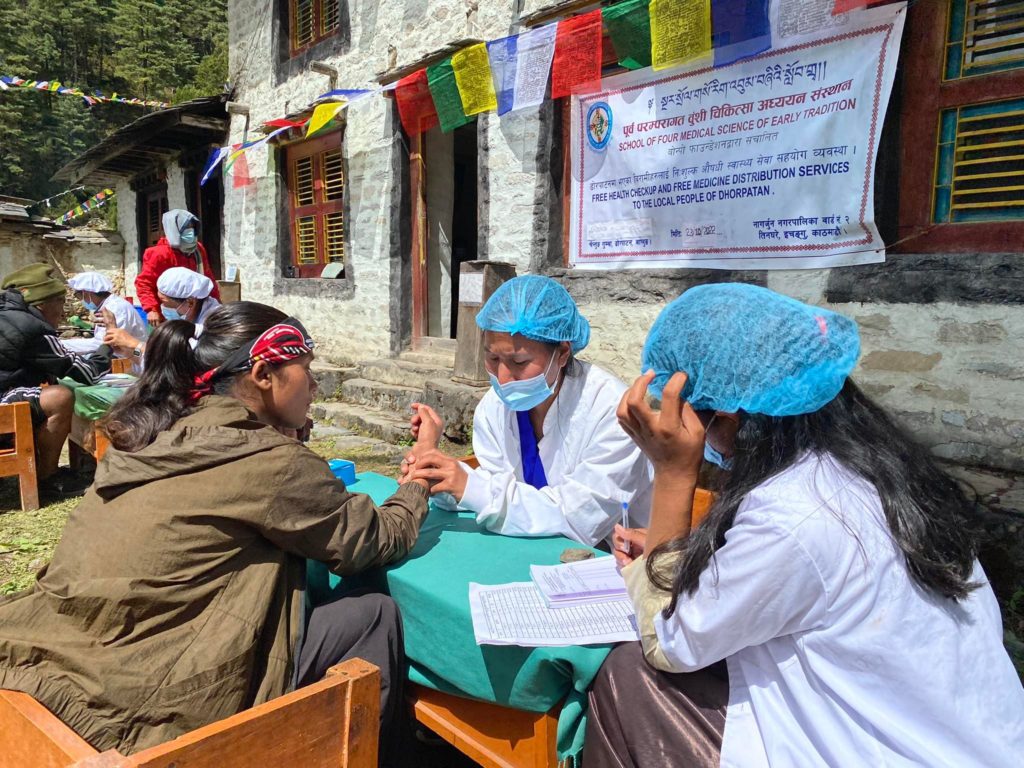
Where do you sleep, in the mountains? In tents?
There are not enough tents for everyone. We stay in caves, or under an overhang of a large rock or in shepherds´ shelters.
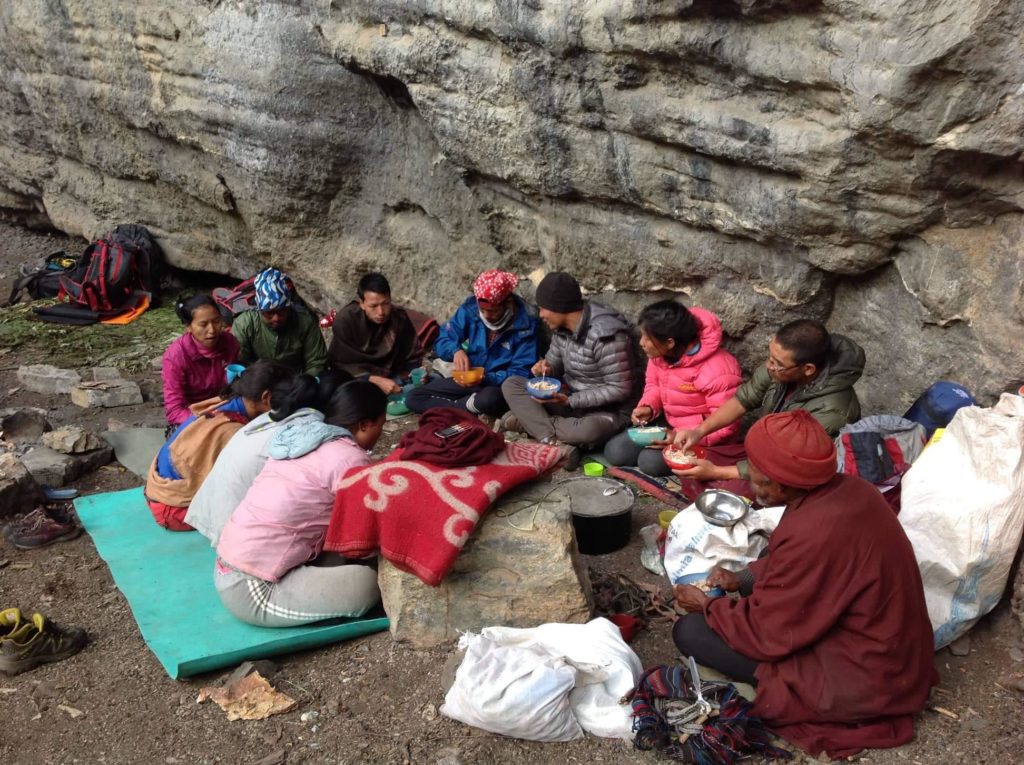


From the study Medicinal Plants of Dolpo: Amchi’s Knowledge and Conservation
“Although harvesting periods of medicinal plants differ with species, amchis generally follow specific cultural or religious processes prior to harvesting. Inauspicious period for harvesting pasture resources, in general, is determined in advance by the head lama of the area based upon the Tibetan calendar and medical texts. Amchis usually propitiate the menlha or medicine deity prior to collecting the plants.Moreover, fodder grass as well as medicinal plants from the pasture, particularly whose underground parts are used, are harvested during a specific auspicious period known as dangsong rikhi. It is a period of seven days determined by the head lama according to the Tibetan calendar when most of the perennial herbs complete their life cycle duringSeptember/October. During this period, ‘nutritional showers’ are said to occur which enriches medicinal plants including grasses, and thus increases their medicinal efficacy.”
Your medical institute serves also as a clinic. Who are the people who seek help from you? Do they all belong to the Bon tradition?
Not really, besides Bonpos also Nepali and Buddhists come. Usually they are people from remote areas of the Himalayas. They know about us from other villagers to whom we helped during our trips to the mountains.
How many patients do you have in average, in a day?
Around 10 – 15.
Do they have to pay for your service?
Yes, but compared to other clinics in Kathmandu we are cheaper.
Are students of the school allowed to deal with patients?
Yes, our senior students, supervised by teachers, can examine them and in this way, they master their knowledge.
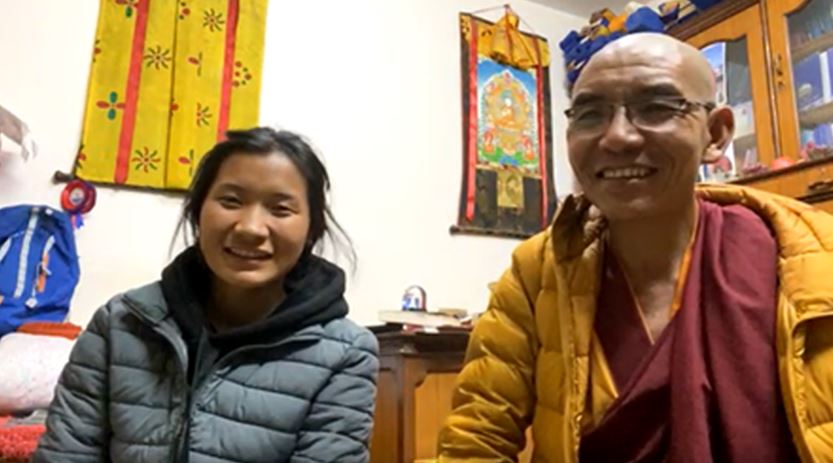
What do you think about Western medicine, Geshe la?
I always tell my students: you have to learn traditional Tibetan medicine, but you also have to learn Western medicine, both are very important. Western medical doctors know many things that traditional Tibetan doctors do not know, and there is some traditional medical knowledge that can enrich the practice of western medicine.
We invite medical doctors trained in Western medicine to the school and share our mutual knowledge. Students from senior classes also attend lectures and seminars of some scientific subjects at the university.
From the study Medicinal Plants of Dolpo: Amchi’s Knowledge and Conservation
“After collection, the plant parts are washed properly,and then dried either in sun or in shade, depending upon the type of disease for which the plants are used.The plants used to treat cold diseases (dangwa) aredried directly in sunlight, whereas the plants used to treat hot diseases (tsawa) are dried in shade. Besides these two categories, for other uses, the herbs are dried both in sunlight as well as in shade. The herbs are stored in leather or cloth bags and wooden boxes.”
Do you have any general advice for people on how to keep healthy?
A healthy body and healthy mind are connected. Meditators think that with the power of their mind they can make their bodies healthy. Traditional medical practitioners believe, on the contrary, that if the body is healthy, the mind will be healthy too. Both points of view make sense. Anyway, meditation is very good to keep a person healthy. I heard about many cases of people who improved their health by meditating regularly.
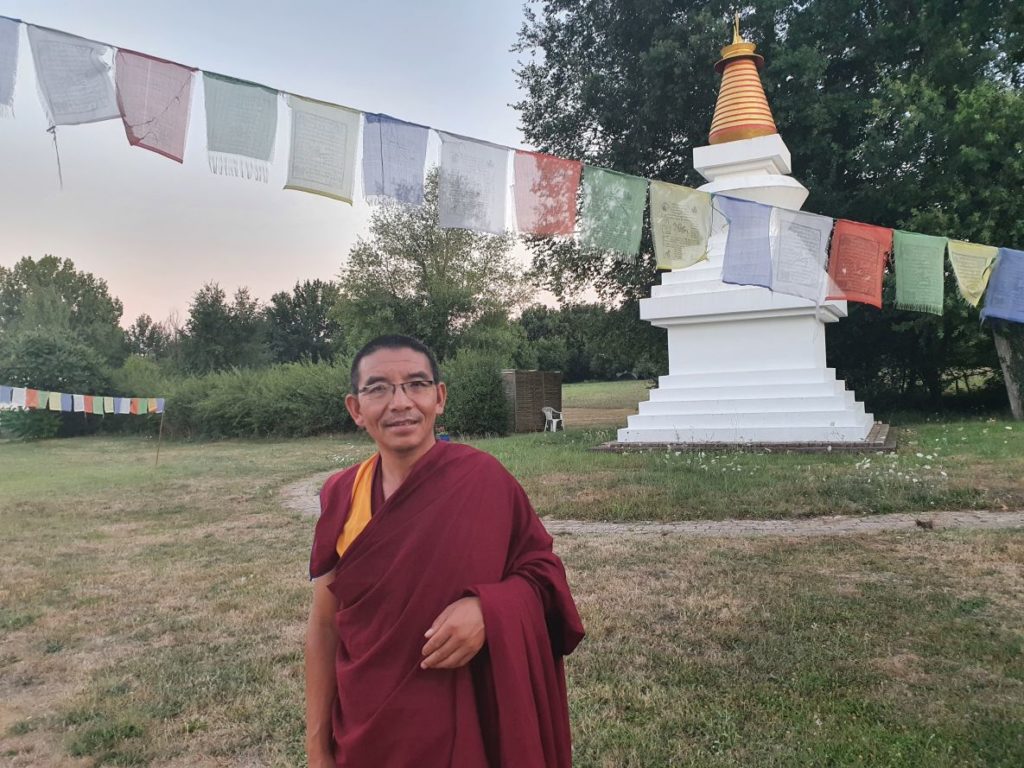
I heard an amchi saying that too many thoughts can bring health problems. In the West, we do not believe that if we think too much it can affect our health.
There is a connection between a lung – a wind energy – and thoughts. There are four main categories of diseases, they can be connected with wind, bile, phlegm and a combination of these three. One of the diagnostic methods is examining the pulse of a person. The pulse can reveal the state of the mind of the patient, a doctor can feel when there is an imbalance caused by the wind – lung.
From the study Medicinal Plants of Dolpo: Amchi’s Knowledge and Conservation
“The most important diagnosis is to identify whether the nature of a disease is ‘hot’ (tsa) or ‘cold’ (dang)because an amchi may do more harm than good if he cannot differentiate between the two. When examining patients, the amchis of Dolpo employ the techniques of seeing, touching and questioning to diagnose an illness. Seeing involves examining the tongue, eyes, complexion, and urine. Touching Involves feeling the pulse and areas where pain is felt by the patient. Questioning involves asking the patient the causes and nature of the illness. Byskillfully utilizing these three techniques, an amchi is usually able to diagnose an illness without sophisticated equipment. But as amchis have repeatedly pointed out, in the absence of a skillful integration of the three techniques, an illness can alsobe misdiagnosed if one merely “fingers the pulse and stirs the urine.”
You gave a teaching to the Western public about the lung at Shenten Dargye Ling, last summer. What was exactly the subject of your seminar?
I gave a basic introduction to sowa rigpa, the traditional science of healing, and to the principal corpus of medical texts called Bum Zhi. Then, I focused on explaining how to harmonize the lung – wind energy – in our organism.
You can read the study Medicinal Plants of Dolpo: Amchi’s Knowledge and Conservation HERE.
Pictures: Geshe Dennyi, Jitka Polanská
We thank Khenpo Gelek Jinpa for translating the conversation with Geshe Dennyi and to Karma Drolma for assisting with the check of the interview.



